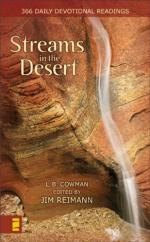|
This section contains 1,419 words (approx. 5 pages at 300 words per page) |

|
The geography of deserts involves landforms, elevation, soil, mineral resources, and water resources.
Landforms
Desert terrain may consist of mountains, a basin surrounded by mountains, or a high plain. Many desert areas were once lake beds that show the effect of erosion and soil deposits carried there by rivers. Wind also helps shape the desert terrain by blowing great clouds of dust and sand that bite into rock, sometimes sculpting it into strange and magnificent shapes. In the Australian Desert, unusual pinnacles (tall mountain shapes) of limestone rock formed over thousands of years by the wind, stand on the flat desert floor.
Sand dunes Bare rock, boulders, gravel, and large areas of sand appear in most desert landscapes. However, vast expanses of sand dunes, sometimes called ergs, occur less frequently than many people believe. Sand dunes make up less than 2 percent of deserts in...
|
This section contains 1,419 words (approx. 5 pages at 300 words per page) |

|




